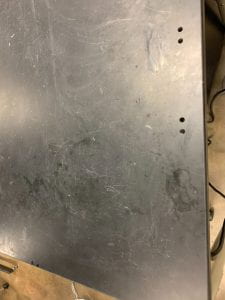Hey there, fellow makers! Prepare to have your mind blown because I’ve just dipped my toes into the magical world of 3D printing, and boy, did I come out with something cool – an impossible worm! Yep, you heard it right, impossible. This little critter’s got joints so tiny, even the Tooth Fairy would need a magnifying glass to spot ’em. A bit of a stretch here but you get the idea 🙂
So, here’s the lowdown: the challenge was to create five mind-bending impossible objects each small enough to fit into a gumball capsule. And guess what? I nailed it using not one, but two different 3D printing techniques – FDM and SLA. I like to think of myself as a 3D printing superhero, fighting the good fight against boring trinkets.
First up, I scoured the depths of ThingyVerse until I found the perfect blueprint for my wormy masterpiece, “Purple Worm Articulated by Mr. Miguel Zavala”. For the FDM printer, I fired up Bambu Studio and got to work slicing and dicing my design. Initially, I thought I’d play it safe with a measly 45 mm size, but then I thought, “Why not go big or go home?” So, I cranked it up to 60 mm. A few tweaks here and there( Layer Height of 0.15mm, Wall Thickness of 1mm, and the Infill Density to 15%), and barely any sprinkle of supports, and voila! The printer spat out four intricate finely-crafted worms – okay, one of them was a bit wonky, but hey, Rome wasn’t built in a day and I bet you wouldn’t be able to identify the wonky worm. My PLA worms were a perfect fit the gumball capsules and properly utilised the available space so I was very delighted with these prints.

My piece from Thingyverse

Modified piece on Bambu Studio

Sliced piece on Bambu Studio
Next came the SLA printer, and let me tell you, it was like watching magic happen. Preform made slicing and dicing a breeze – just hit auto-generate supports and watch the software work its mojo. Same size, different printer, same awesomeness. The only tweak here was switching from a general auto-generate which had a print time of 6 hours to clicking auto-generate specifically within the Supports tab which had a print time of 2 hours. Here, I made 3 SLA prints just to be able to select the perfect 1 from the 3. Sure, some of the joints ended up being more for show than function as they were not as mobile as my PLA print, but who cares when you’ve got a worm that defies the laws of physics? Not sure which laws exactly, but at least some law for sure.
Post-processing the FDM prints for me was fairly simple as my PLA supports came out quite easily and the supports stuck between the joints were comfortably taken out using tweezers. However, post processing the resin prints was the real science and time-consumer. I had to wash and cure the finished pieces which took somewhere about an hour. And finally taking off the SLA supports using cutters was a nightmare for a busy man like me. Luckily 5 minutes into that draining process, I found a scraper that was able to take out all the supports in 2 minutes. Then I went back to my trusty cutter to do a final pass and smoothen all my printed pieces.

PLA Print before Post-Processing

PLA Print after Post-Processing

SLA Print before Post-Processing

SLA Print before Post-Processing

My finished 3D-Printed worms

Clean Work space
Now, onto the nitty-gritty – cost analysis. PLA for the FDM prints set me back $1.62 (thank you, Bambu Lab Carbon), while resin for the SLA prints clocked in at roughly 2 bucks (gotta love your resins!). Add in an hour of labor at an okay $15 an hour, that is excluding wait times for printing, and we’re looking at a grand total of $18.62. Bargain!
So, there you have it, friends – my foray into the quite tame and wacky world of 3D printing. Sure, there were ups and downs, wonky joints, and rough edges, but hey, isn’t that what makes the journey worthwhile? Until next time, keep on printing, keep on dreaming, and keep growing your boundaries of what’s possible! -Super cool outro, I know! Would you believe this blog is actually for a class grade, sighs 🙂
